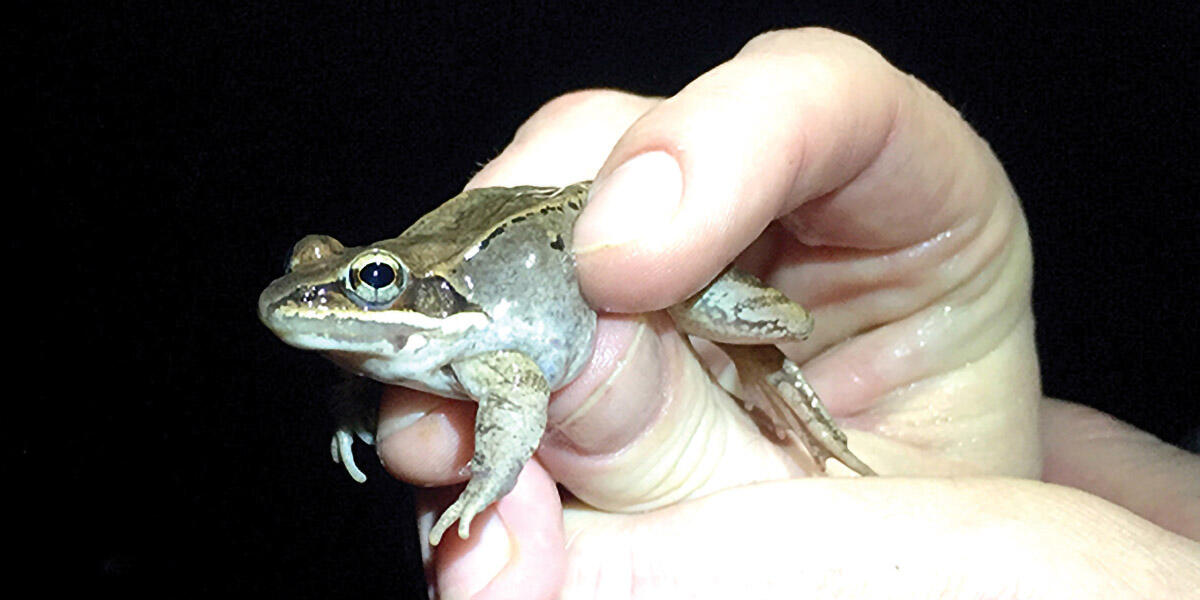
Frog & Toad Songs
Frogs and toads produce interesting vocalizations, sometimes called songs or calls, to advertise their territory and attract a mate. Often males do all the singing. Below are examples of the songs of species found on our campus.
Recordings courtesy of the Macaulay Library at the Cornell Lab of Ornithology.

American Bullfrog
(Lithobates catesbeina)
Adults are larger than green frogs, have a rounder snout, and lack a dorsolateral ridge on their backs.

American Toad
(Lithobates catesbeina)
American toads range from light tan to dark brown with black blotches. Each blotch has 1 to 2 warts. Their bellies are lightly spotted.

Fowler's Toad
(Anaxyrus fowleri)
Fowler's toads are tan and brown with dark blotches consisting of 4 to 6 warts. Unlike the American toad, their bellies lack spotting.

Green Frog
(Lithobates clamitans)
Ranging from green to brown, often with grey mottling or blotches on their backs, they have a pointy snout and a dorsolateral ridge that runs all the way down their backs.

Grey Tree Frog
(Hyla versicolor)
Grey tree frogs live in trees. They vary in color from light to dark grey or brown and have a distinct white spot under their eyes. These frogs can change color to match whatever surface they are on.

Pickerel Frog
(Lithobates palustris)
Pickerel frogs are typically tan with square or rectangular brown to black blotches on their backs. The undersides of their hind legs are a creamy yellow.

Spring Peeper
(Pseudacris crucifer)
Spring peepers range in color from brown to grey. They have a distinct "X" on their backs. Their call is synonymous with spring time at the Cary Institute.

Wood Frog
(Lithobates sylvaticus)
Wood frogs are brown or tan and have a distinct white upper lip and a dark colored "mask" behind their eyes.
